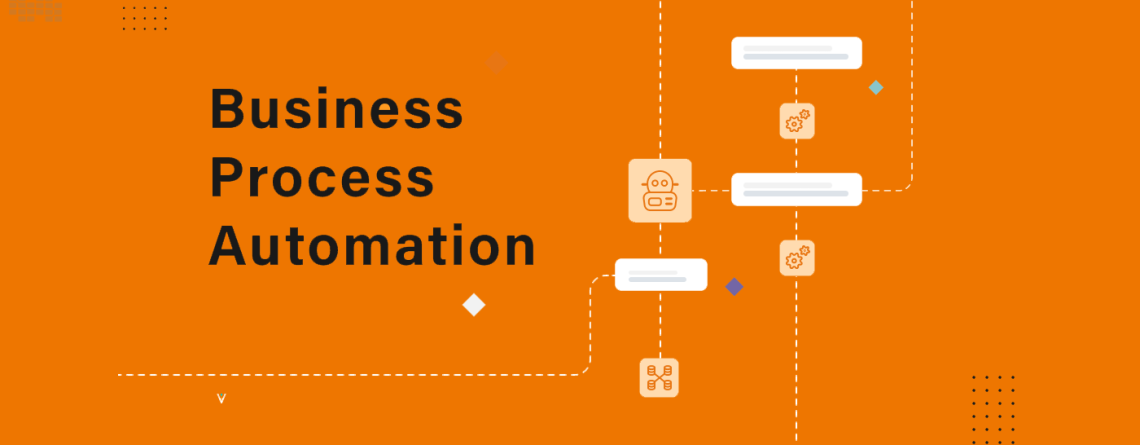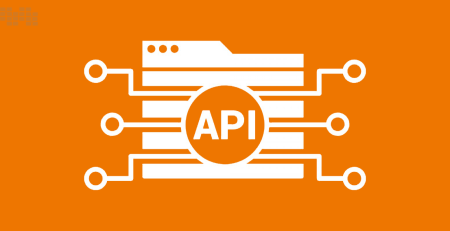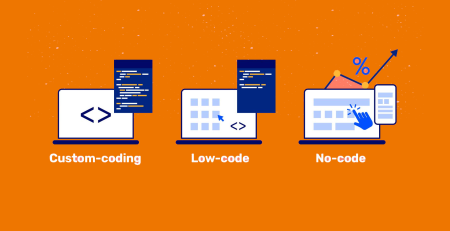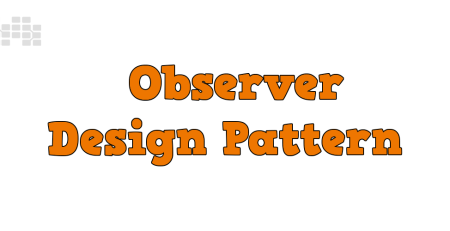Business Process Automation (BPA)
What is business process automation?
The use of advanced technology to complete business processes with minimal human intervention is known as business process automation (BPA). A business process is an activity, or set of activities, used to achieve a specific organizational goal, such as manufacturing a product, integrating new employees, or attracting new customers.
An action is often the starting point for a business process that spans multiple business departments. For example, during employee onboarding, the HR system could initiate a series of predefined workflow steps to send out a welcome email, configure security credentials, and enter financial information into the compensation system. Typically, automating the workflow steps in a business process improves the efficiency and accuracy of each step.
BPA makes use of cutting-edge technology such as automation tools, process intelligence capabilities, and cloud platforms. Furthermore, BPA capabilities are frequently hidden behind popular enterprise apps like ERP software, human capital management systems, and other tools that enforce industry best practices.
Examples of business process automation
Management, operations, supply chain, HR, and marketing are all examples of business processes that can be automated. In general, high-volume, recurring, time-sensitive tasks that involve multiple people, require compliance, and require audit trails are good candidates for automation.
Here is a list of business processes that can be aided by automation.
1.New employee orientation. Integrating a new employee is a critical business process that entails many low-level but meticulous tasks, such as filling out employee forms and scheduling training sessions, as well as completing tax documents and opening bank accounts. By automating the process, much of the paperwork is eliminated, all steps are completed, and relevant managers and employees are kept informed. Find out more about the advantages of automating the onboarding process.
2.New customer onboarding As part of the Know Your Customer Rule 2090 requirements, banking, insurance, and other finance companies must conduct background checks on new customers and notify the appropriate local and federal governments when they onboard them. BPA can help to streamline these processes by automating many manual steps with artificial intelligence. Customer satisfaction improves as processes become faster and more automated.
3.IT service desk assistance. In most cases, the volume of incoming IT tickets exceeds the capacity of IT staff to handle them. Among other things, automation software can analyze, classify, and route incoming tickets to the appropriate support personnel, provide service updates to customers, and alert IT workers to issues that require immediate attention for compliance reasons. AI is used in advanced automated helpdesk tools to predict, manage, and resolve common user issues.
4.Automation of marketing. Marketing automation software enables businesses to target customers with automated marketing messages via email, websites, social media, and text messages in order to generate sales leads. The technology is a subset of customer relationship management, or CRM, and is commonly used by marketing departments to eliminate repetitive tasks from staff workflows and boost overall marketing efficiency. More information on marketing automation can be found here.
Benefits of business process automation
Business process automation increases efficiencies and standardization, which leads to numerous business benefits, including the following:
- increased productivity
- lower costs
- reduced error rates
- greater employee satisfaction
- higher revenues
- better customer service
- insight into process success and failures
- better auditing and compliance
Taking humans out of repetitive tasks that are better handled by machines saves time and reduces error rates, provided that the steps in the process are well defined, subject to limited interpretation, and that exceptions – instances where human intervention is required – are communicated to the appropriate people for timely resolution by the process automation system. Workflow automation of low-value tasks allows employees to focus on higher-value tasks.
Organizations gain transparency into their workflows by centralizing a business process through automation. BPA software allows businesses to view all process steps on a single dashboard, providing visibility into the status of process activities ranging from task reviews to the approval process. Automation can also ensure that regulations are followed.
BPA is becoming increasingly important in today’s enterprises’ quest to become digital businesses. Process automation is essential for digital transformation, which often begins with converting information into computer-readable formats, which then become part of enterprise-wide automation.
Challenges. It should go without saying that not every process is a good candidate for automation. BPA is best suited to high-volume, recurring, time-sensitive tasks involving multiple people. Automation makes it easier to manage compliance and auditing requirements. Automation, as mentioned in this article on the benefits of BPA, is also not a one-time event. Enterprises should review how changes in governance requirements, regulations, security, and other factors affect automated processes on a regular basis.
How does BPA relate to RPA?
As previously stated, the term BPA refers to a set of automation capabilities for streamlining and improving business processes. Robotic process automation (RPA) is a subset of business process automation (BPA) that focuses on automating how humans use software applications at work. Businesses like it because it offers a quick path to automating how humans interact with and copy data between the applications they use to do their jobs. Workers and developers alike can use RPA software to record the rough draught for a simple automation by clicking and scrolling their way through a business process. The development team hardens these draughts into final apps. These fundamental programs are then hardened against changes in application layouts or workflows by the various RPA platforms.
To create more sophisticated automations, intelligent process automation and digital process automation combine basic RPA capabilities with AI tools. Optical character recognition, for example, can read printed text, and natural language processing can map invoice numbers to fields in business systems. Machine vision algorithms could estimate insurance damages, for example. Other types of decisions that a bot may have to make could be automated using AI and machine learning algorithms.
Another type of BPA automation tool is low-code development platforms. Low-code development tools outperform traditional RPA programs by utilizing application program interface (API) access rather than emulating human progress through the UI. And some low-code platforms, such as Microsoft’s Power Automate, are combining the simplicity of RPA programming techniques with the speed of cloud API execution.
How does BPA relate to BPM?
BPA can be a stand-alone initiative or a component of a larger business process management (BPM) strategy. BPA and BPM are sometimes used interchangeably, but they are not synonymous.
Both BPA and BPM aim to assist businesses in better achieving organizational goals by improving business processes, but their scopes differ. BPA is concerned with how automation can be used to simplify and streamline business processes. BPM can include or exclude automation, and it uses a variety of methods to discover, model, analyze, change, and optimize end-to-end business processes.
Business processes are managed collectively in BPM to not only reduce error rates and improve workflow efficiency, but also to clarify job roles and responsibilities and increase the organization’s capacity to adapt to changing business goals, for example.
BPM projects frequently employ diagramming tools such as BPMN to depict complex business processes. These diagrams are used to help people understand existing business processes. They may also be used as templates for automating processes using various BPA technologies.
How does BPA relate to business process analysis?
Business process automation and business process analysis are complementary technologies with the same abbreviation. As the name implies, business process analysis is concerned with the analysis of business processes. It is a subset of BPA that uses manual and automated methods to map and understand existing processes.
To create a process map using the manual approach, process experts typically interview subject matter experts and business users. To achieve the same results, the automated approach employs a variety of technologies such as process mining, process capture, and process intelligence.
Process mining examines enterprise system logs to identify business processes and variations in how they are carried out. Process capture (also known as task mining) employs machine vision to monitor an employee’s screen in order to generate a map of processes that span multiple applications. Process intelligence is a newer term for the use of both technologies in conjunction with BI and analytics capabilities to increase automation and insight.
Gartner has recently begun to use the term enterprise business process analysis (EPBA) to describe these more automated approaches to mapping and analyzing processes.
How to automate business processes
Before embarking on a BPA project, it is critical to understand how the current process works, why it is a good candidate for automation, and how it should be altered. Here are some essential first steps.
1.Examine the enterprise’s interest in business automation. Because business process automation alters how work is completed, it necessitates support from key stakeholders. The level of executive commitment required for a BPA effort will be determined by the scope of the automation. Employees will need to be kept informed: Whether the BPA project is as simple as converting a paper form into electronic format and routing it to the appropriate people, or as complex as a transformative automation effort designed to support a new business model, employees impacted by the automation must be trained on the new workflow and understand the business value provided by the BPA technology. It is also critical to communicate how the new automation may benefit their jobs.
2.Recognize potential candidates for automation by understanding your “as-is” processes. It is difficult to get to where you want to go if you don’t know where you’re going. Before deploying an automation tool, it is critical to understand the current process. Many organizations, however, will struggle to understand existing business processes and the business rules that govern them.
3.Determine the automation maturity of your project. Companies typically see the greatest return on investment from BPA projects that automate complex, mission-critical processes and case management. Most experts, however, advise companies with limited automation experience to start small, focusing on recurring, rules-based tasks like purchase orders, where the steps (including exceptions) are unambiguous and well understood. Process intelligence capabilities such as process mining and process capture can aid in the automation of this work.
4.Collect feedback from key stakeholders on which process steps to eliminate, optimize, and automate. Another popular phrase in the process automation world is “don’t pave the cow path.” The idea is that automating an existing process without first investigating where it can be improved or how it should be changed simply accelerates existing flaws. There is some debate about the wisdom of this warning, particularly for companies looking for quick wins from automation, but BPA experts generally believe that an existing process should not be automated without first analyzing how it could be more effective or without input from key stakeholders. Successful automation projects, according to software engineer James Highsmith III, a prolific writer on software development and one of the original authors of the Agile Manifesto, have input from multiple sources, including business analysts, development teams, and IT.
Business process automation tools and software
BPA encompasses a diverse range of well-established and rapidly evolving business automation technologies, including the following:
- workflow tools geared to business users with limited coding experience;
- RPA, which creates software robots that mimic how humans interact with digital systems through the user interface;
- intelligent automation, which uses machine learning and other AI tools to train automation models which improve over time;
- digital process automation (DPA), a term reflecting the linkage between BPA strategies and the larger undertaking of digital transformation.
Furthermore, business process management software (BPMS) is evolving, with leading BPM vendors such as Pegasystems, Appian, and others adding RPA, AI, and low/no-code capabilities.
To reflect the evolution of BPM software, Forrester Research has replaced the terms BPM with DPA-deep and DPA-wide. As a result of this fast-paced technological environment, businesses must establish what Forrester refers to as an automation framework, which distinguishes between various automation tools, filters out market hype, and understands how they can be used separately and in tandem to achieve business process automation.













Leave a Reply